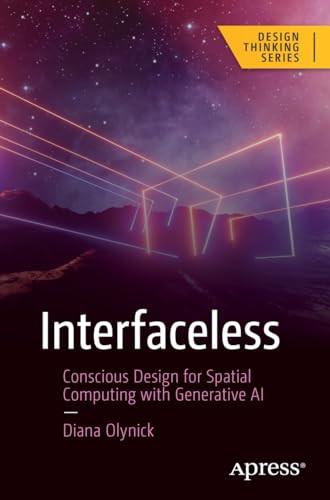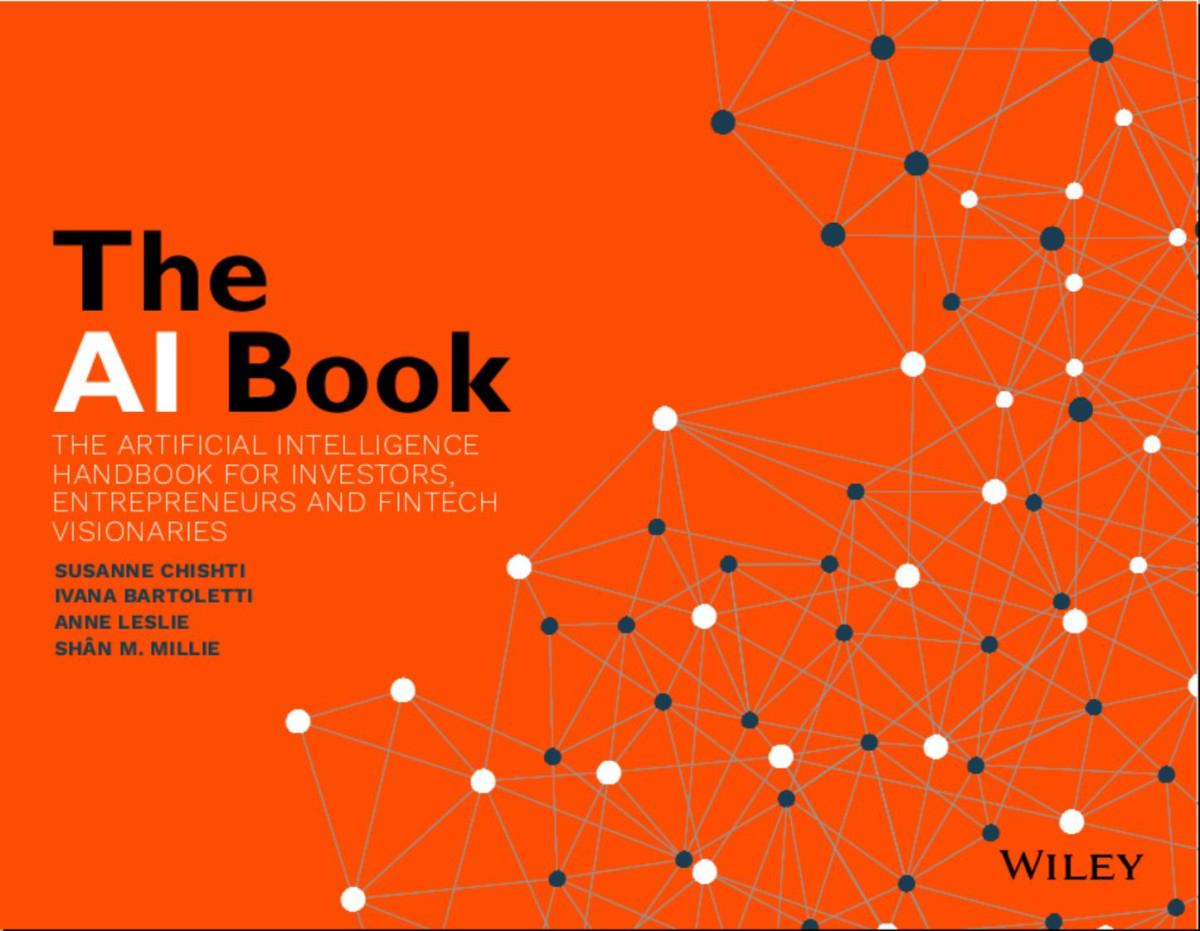Contents at a Glance
Dedication
Preface
Introduction
DefinitionofAI andProject Management
The Importance ofAI inProject Management
Overview ofthe Book
1. Dawnofa New Era
2. Stakeholders andGenerative AI
3. BuildingandManagingTeams UsingAI
4. Choosinga Development ApproachwithAI
5. AI-AssistedPlanningfor Predictive Projects
6. Adaptive Projects andAI
7. MonitoringProject Work Performance withAI
8. The Role ofAI inRisk Management
9. FinalizingProjects withAI
10. AI Tools for Project Management
11. LookingAhead
Contents
Dedication
Preface
Introduction
DefinitionofAI andProject Management
The Importance ofAI inProject Management
Overview ofthe Book
1. Dawnofa New Era
Not Robots
AI andBrook’s Law
ArtificialIntelligence
ChatGPT
Prompt Engineering
EthicalConsiderations andProfessionalResponsibility
Key Points to Remember
TechnicalGuide
2. Stakeholders andGenerative AI
IdentifyingProject Stakeholders
The Impact ofAI onStakeholder Expectations
Stakeholder Analysis withAI
EngagingStakeholders ThroughAI-Driven
Communication
AI as a Stakeholder for Project Management?
EthicalConsiderations andProfessional
Responsibilities
Key Points to Remember TechnicalGuide
3. BuildingandManagingTeams UsingAI
AI-AssistedRecruitment andSelection
AI-DrivenTeamOnboarding,Training,and Development
EnhancingLeadershipwithAI
UsingAI Tools to Enhance TeamCollaboration
AI inConflict ResolutionandDecision-Making
EthicalConsiderations andProfessionalResponsibility
Key Points to Remember TechnicalGuide
4. Choosinga Development ApproachwithAI
UnderstandingPredictive,Adaptive,andHybridLife Cycle Approaches
UsingAI to Select the Right Development Approachfor Projects
TailoringYour ApproachwithAI
EthicalConsiderations andProfessionalResponsibility
Key Points to Remember TechnicalGuide
5. AI-AssistedPlanningfor Predictive Projects
AI-AssistedProject Initiation
AI-AssistedPlanning
TechnicalGuide
AI-AssistedProject Scope Definition
AI inWBSCreation
Creatinga Schedule fromthe WBSusingAI
AI-EnhancedCost EstimationandBudgeting
EthicalConsiderations andProfessionalResponsibility
Key Points to Remember
TechnicalGuide
6. Adaptive Projects andAI
Adaptive Projects
ScrumPrompts
Agile Estimation
Project Execution
Project Measurement andTracking
EthicalConsiderations andProfessionalResponsibility
Key Points to Remember
TechnicalGuide
7. MonitoringProject Work Performance withAI
Direct andManage Project Work
Quality Management withAI
AI inMonitoringandControllingProject Work
ValidatingandControllingScope,Schedule,andCost withAI
EthicalConsiderations andProfessionalResponsibility
Key Points to Remember
TechnicalGuide
8. The Role ofAI inRisk Management
Risk IdentificationwithAI: UnderstandingThreats and Opportunities
EnhancingTraditionalRisk IdentificationMethods with AI
Qualitative Risk Analysis andAI
Quantitative Risk Analysis andAI
AI inRisk Responses
AI inRisk Monitoring
Ethics andProfessionalResponsibility
Key Points to Remember
TechnicalGuide
9. FinalizingProjects withAI
ReleasingProducts andServices
VerifyingandValidatingProject Deliverables and Usability TestingwithAI
Deployment withKnowledge fromAI
Project Closure
Value Delivery
Ethics andProfessionalResponsibility
Key Points to Remember
TechnicalGuide
10. AI Tools for Project Management
Value andImplications ofAI IntegratedTools for
Project Managers
Factors to Consider WhenEvaluatingAI Tools
Project Management Systems
SchedulingTools
CommunicationandMeetingTools
Productivity andDocumentationTools
CollaborationandBrainstormingTools
Ethics andProfessionalResponsibility
Key Points to Remember
TechnicalGuide
11. LookingAhead
Embrace ofAI Is a Boonto Project Management
The AI-PoweredFuture inEnterprises
Risks FromAI
Introduce AI Solutions Only to Address a Need
ClosingRemarks
1. Dawn of a New Era
Inthe comingyears projects willbe planned,executed,and managedlike never before. Generative artificialintelligence (AI) excels at content creation,andit willoffer project managers advancedcapabilities like quickly buildinga project planbasedonsimulatedscenarios,rescheduling easily,predictingrisks,andprovidingrapidreal-time solutions to issues.
Modernproject management beganto take root inthe early 1960s,whenindustrialandbusiness organizations beganto value the benefits oforganizingwork aroundprojects. Ambitious projects fromNASA,suchas sendinghuman explorers 250,000 miles to the moon,requiredeffective project management. Globally across industries, organizations beganto embrace andimplement systematic project management tools andtechniques to ensure success andefficiency. This periodsaw the establishment of standards andbest practices,encapsulatedby formal educationandcredentials inproject management from dedicatedproject management organizations. Global collaboration,professionaldevelopment,andacademic researchledto the advent oftechnologicaltools and
techniques,allofwhichcollectively positionedproject management as a distinct andnecessary discipline crucialfor the efficient executionandsuccess ofcomplex projects inthe modernera.
IntegratingAI into the realmofproject management signals a transformative shift andthe dawnofa new era for project management. AI tools willhelpoptimize resource use, anticipate project bottlenecks,andautomate mundane tasks. This enables project managers to concentrate ondevising strategies,deliveringvalue,andmanagingstakeholders and their concerns.
Not Robots
Many ofus grew upina worldwhere AI was the stuff of science fictionexperiencedonthe movie screen. It was possibly a humanlike robot that was novel,fun,and fascinatingandthat impressedus withits capabilities. These characters captivatedour imagination,makingus wonder about a worldwhere machines might think andact like us someday. However,these robots never actually came to work anddidnot helpus to planandorganize projects or enhance our productivity.
More recently,interactive technology,suchas Siri,Alexa, andrelatedimpressive voice or chat assistants,intriguedus withthe possibilities that AI technology couldbringto the table. There is a certainawe or magic inaskinga question out loudandreceivinga relevant answer froma nonhuman entity. These interactions felt novelandwere very useful what is the weather today? What is my commute time to work today? What is onmy calendar today? Due to integrationwithdata analytics,these AI assistants could provide somethingrealandpractical.
But while these AI assistants introducedus to communication withdevices andtraditionalchatbots,the experience was missinganin-depth,persistent,andcontinuous “humanlike” interactionwithanentity we couldrecognize as a peer,ifnot a true expert.
EntergenerativeAI—andcontextuallanguage models based onanarchitecture that generates perfect human-like text.
Generative ArtificialIntelligence Tools
These tools use computer algorithms to create new text content inresponse to a prompt. Many types ofgenerative AI products are emerging
that cancreate other types ofcontent,suchas audio,programmingcode,images,andvideos. For the remainingchapters ofthis book,this is what we meanby AI.
Designedto converse withhumans innaturallanguage,the outcome fromAI products suchas ChatGPTTM is coherent andengaging. ChatGPT is anexpert onvarious subjects, capable ofunderstandingandgeneratinghumanlike text basedonthe prompts it receives. It cananswer questions, assist invarious tasks,andmaintainnaturalconversation across topics rangingfrommedicine to project management. Suchtools are always available,very fast inresponse time, andappear eager to help.
Tools like ChatGPT represent anevolutioninconversational AI. They are designedto understandcontext very well,assist withtasks,or engage inconversations as ifyouwere genuinely talkingwithanother humanbeing. The experience oftalkingwithsuchtools is distinct. It’s as thoughyou’re chattingwitha true expert who knows all.
Anote ofcaution. Like the warningoncigarette boxes,every conversationwithChatGPT must start or endwitha warning saying,“Hey,I amnot a realhuman.” ReidHoffman’s book
Impromptu,whichuncovers his conversations inthe latest versionofChatGPT,GPT-4—is worthquotingwithinthis context:
Ihopethatyou,asareader,willkeepthefactthatGPT-4is notaconsciousbeingatthefrontofyourownwondrously humanmind.Inmyopinion,thisawarenessiskeyto understandinghow,when,andwheretouseGPT-4most productivelyandmostresponsibly.
1 Hoffman,R. (2023). Impromptu:AmplifyingOur HumanityThroughAI. Dallepedia LLC.
Aquick note oncomparisonwithtraditionalchatbots,which many ofus might have experiencedas customer service assistants. These oftenfelt robotic andoverly scripted. In many cases,suchchatbots cannot answer our questions and frustrate us. Incontrast,generative AI tools are adaptable andpossess vast knowledge andcapabilities beyondwhat a conventionalchatbot is designedto handle. This results ina more humanlike conversationexperience,reducinguser frustrationandofferingmore accurate andnuanced answers.
The impact ofChatGPT goes beyondjust answering questions. It’s also redefiningthe way we perceive AI. No longer are we limitedto perceivingAI as a programmed entity—suchas instructinga robot withprecise code to walk, lift,or build. Instead,we’re enteringanage where AI canbe a valuable tool—a coach,a companion,a mentor,a collaborator invarious spheres oflife andwork and disciplines suchas project management. This modernAI has the potentialto understandcontext,provide insights,and augment the humancapabilities ofproject managers and enhance their productivity.
Let’s demonstrate suchcapabilities usinga semifictional case study inwhichwe draw uponour real-worldexperience withproject management andAI practitioners,alteringsome details andidentifyinginformation. to illustrate AI’s transformative impact onproject management.
AI inAction: Swift Project Turnover
This example is basedonour experience withaninsurance company we’llcallNew Era Insurance,inHartford, Connecticut. Project managers inthis organizationfaced obstacles andprojects underperformedinspecific key metrics involvingcost andschedule. The senior leadership
assumedthat this was due to a lack ofthe ability to estimate projects accurately. However,a conversationwiththe project managers andother teammembers revealedthat the root cause for the problemwas poor change management practices andstaff turnover. The latter point was a significant source ofstress for project managers; we aimto demonstrate how AI canalleviate this issue.
There is a highrisk ofwastedtime andloss ofproductivity whena teammember departs fromthe project teamor exits the organization. Elevatedturnover inprojects canleadto reducedefficiency,heightenedcosts for recruitment and training,anda dropinthe spirits ofthe existingteam, potentially affectingthe project’s finalresults. Moreover, turnover puts more pressure onproject managers as they grapple withintegratingnew members andmaintaining project consistency. CanAI assist inaddressingturnover by expeditingthe rehiringprocess?
At New Era Insurance,Ellen,a seasonedproject manager, was ina quandary. Jen,a key teammember,decidedto leave midway througha pivotalproject. The departure threatened to derailtheir timelines anddisappoint the stakeholders.
However,equippedwiththe capabilities oftheir generative AI-drivenHR system,Ellenwas optimistic about handlingthe turnover andfacilitatinga seamless returnto normalcy.
WhenJensubmittedher resignation,Ellenloggedinto the company’s Enterprise AI platform,code-named“HR-GPT.” She enteredthe job role andproject specifics. Within minutes,HR-GPT pulledupa list ofpotentialcandidates from
bothinternaldatabases andexternaljob platforms. The AI systemscreenedrésumés,matchingcandidates withthe requiredskills andexpertise for the project.
Ellenreceivednotifications oftopcandidates,complete with AI-generatedinterview schedules basedonEllen’s availability,that ofthe candidates,andavailable conference rooms. HR-GPT evenprepareda set ofinterview questions tailoredto assess the candidates’skills inrelationto the project’s needs. This savedEllenhours ofpreparation.
After the interviews,Ellenfelt a bit tornbetweenthe two candidates. She turnedto HR-GPT again,whichprovidedan analysis comparingthe candidates basedontheir responses, past job performances,andfit withthe company culture. This made Ellen’s decisionmore straightforward.
Once the new employee,Max,was selected,HR-GPT moved into onboardingmode. Max receiveda series ofpersonalized tutorials about the project. These tutorials,generatedby the AI,drew fromdocumentation,past teamdiscussions,and evencode snippets to helphimunderstandthe project’s current state.
OnMax’s first day,he didn’t wander aroundlookingfor supplies or access permissions. HR-GPT hadalready set up his workstation,grantedhimaccess to necessary files,and evenscheduleda virtualmeet-and-greet withthe team.
Ellenwatchedwithsatisfactionas Max quickly integrated into the team,armedwithinsights andknowledge that typically took weeks to accumulate. The project not only stayedontrack,but also thrivedwithfreshenergy. Ellenwas gratefulfor HR-GPT’s AI capabilities,whichturneda potentialproject crisis into a smoothtransition.
Many practitioners estimate that upto 90 percent ofa project manager’s time is dedicatedto oralandtechnical communications. While a lot ofthe communicationis essential,a significant portionofit couldbe classifiedas a waste oftime. Let’s break downthe communicationand associatedtasks Ellenwouldtypically handle without HRGPT,andthenestimate the time savedby usingHR-GPT:
• Job PostingandCandidate Search:
• Traditionalmethod: Researchingandwritinga job description,postingit onmultiple platforms,andmanually reviewingrésumés
• Estimatedtime: 8 hours
• WithHR-GPT: One hour to input the role andproject specifics
• Time saved: 7 hours
• Interview Scheduling:
• Traditionalmethod: Coordinatingwithcandidates and reschedulingwhenconflicts arise
• Estimatedtime: 4 hours
• WithHR-GPT: Thirty minutes
• Time saved: 3 hours
• Interview Preparation:
• Traditionalmethod: Craftingtailoredinterview questions andreviewingcandidate backgrounds indetail
• Estimatedtime: 6 hours
• WithHR-GPT: AI-generatedquestions tailoredfor the role
• Time saved: 5 hours
• Candidate ComparisonandDecision:
• Traditionalmethod: Reviewinginterview notes, deliberating,andpossibly discussingwithcolleagues
• Estimatedtime: 4 hours
• WithHR-GPT: Instantaneous comparisonandanalysis
• Time saved: 3 hours
• OnboardingPreparation:
• Traditionalmethod: Preparingdocumentation,settingupa workstation,grantingaccess to files,andorganizinga meetand-greet
• Estimatedtime: 8 hours
• WithHR-GPT: Mostly automated
• Time saved: 7 hours
Totaltime traditionally spent: 30 hours. Totaltime saved withHR-GPT: 25 hours.
Inthis scenario,AI savedEllenapproximately 25 hours on recruiting,interviewing,decision-making,andonboarding
tasks. Giventhat these tasks are primarily communicationrelated,we caninfer that a significant proportionofa project manager’s time is spent oncommunications management. This validates the notionthat project managers know that a significant portion,around90 percent, oftheir time is dedicatedto managingproject communications.
AI and Brook’s Law
Brooks’Law
Addingmanpower to a late software project makes it later.
FredBrooks coinedthis inhis 1975 classicalbook The MythicalMan-Month. The validity ofBrooks’Law is evident intuitively. The communicationoverheadincreases when more new people are addedto the project. More time is spent onboardingthe new teammembers andcoordinating andresettingcommunications betweenteammembers. Such changes willleave less time for the planneddevelopment tasks for the existingteammembers andresult infurther slippage inthe schedule.
2 Brooks,Fred. (1975). TheMythicalMan-Month. AddisonWesley. Let’s see how ChatGPT understands Brooks’Law.
Promptingis a straightforwardprocess. Youask a question, widely calledaprompt,andChatGPT provides a response. If youhave experience withChatGPT,youmay already be familiar withits AI chat interface (Figure 1.1).
FIGURE 1.1 ChatGPT interface witha prompt andresponse















